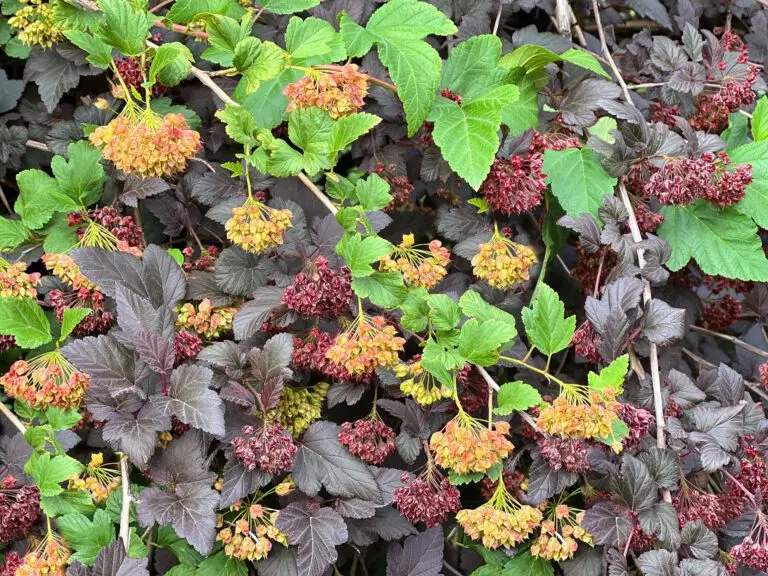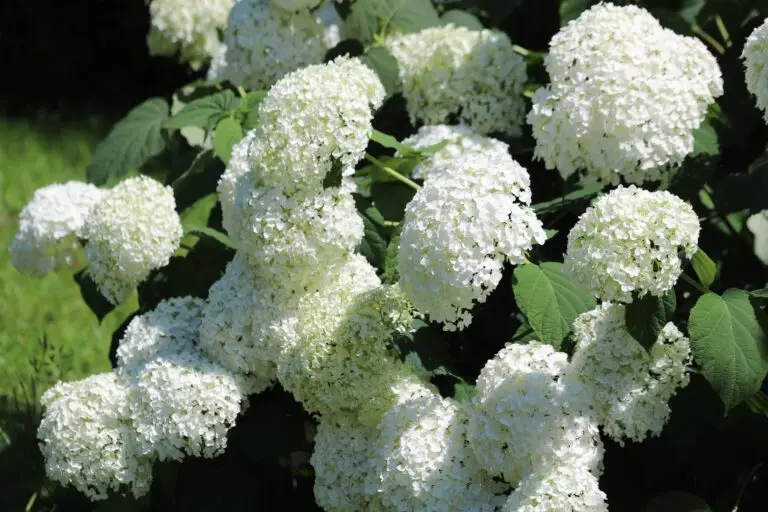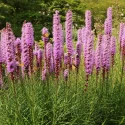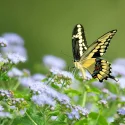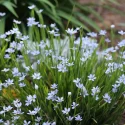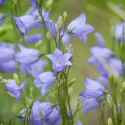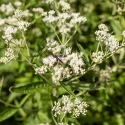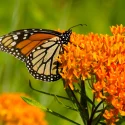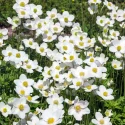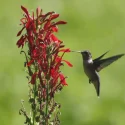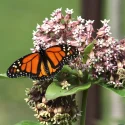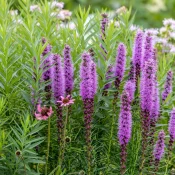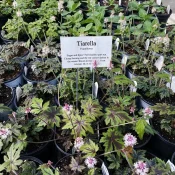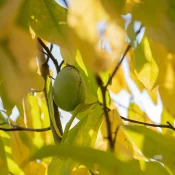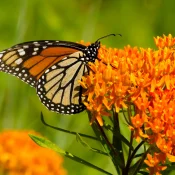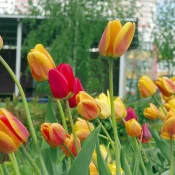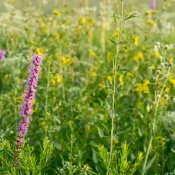What is a cultivar?
A cultivar is a plant selected by humans for certain characteristics—such as color, drought resistance, height, or even petal shape. Cultivar is short for a cultivated variety. A true native plant is not a cultivar, because it has been untouched by humans.
You may have come across the term “cultivars” and wondered what it means. Cultivars, short for cultivated varieties, are specific plant varieties that have been carefully selected or bred for their unique characteristics. In this article, we’ll explore the world of cultivars and demystify their origins. Whether you’re interested in discovering if cultivars are ok to plant, or how to spot them in plant nurseries, we’ve got you covered!
Cultivars = genetic variation, curated
Just like any other organism, the genetic “instructions” vary from plant to plant. Each plant’s DNA brings an opportunity for a different leaf color, a variation in flower petals, a sweeter fruit, or the ability to better withstand rain or drought. There are a few ways cultivars are made (read on below to find out the processes.) When humans select a certain plant variation in a plant, that plant becomes a cultivar.
What is a native cultivar, or ‘nativar’?
A native cultivar or nativar is a native plant that has been curated by humans to look and behave a certain way. There are hundreds of native plant cultivars (or nativars) available.
A great example of a nativar is Heuchera. Heuchera Americana is a native plant (which also goes by the common name alumroot). Every year, new colors and variations of Heuchera arrive due to a stream of cultivars.
Resilient Nativars
Cultivars are not just about color; sometimes nativars are bred to help withstand temperature or rainfall. For example, the Redbud ‘Columbus’ has been bred to withstand colder temperatures. This Redbud cultivar has made it possible for the tree to withstand rough midwestern and northeast winters.
More on nativars vs. native plants later. Now you may be wondering:
How are cultivars made?
Humans have been creatively cultivating plants and making cultivars for centuries. Although you may imagine scientists in lab coats, heads bent down over metal tables with pipettes and beakers, generations of growers have saved seeds from their favorite plants. These plants are cultivars.
Today, cultivars are made in four different ways:
Selection: This is the process of choosing plants that have desirable traits and then propagating them to create a new population of plants with those traits. If a plant change happened naturally, that cultivar can also go by the name variety. (I know, another term! But stay with me!) The term ‘variety’ is useful because it helps us know the variation is naturally occurring.
Hybridization: This is the process of crossing two different varieties or species of plants in order to create a new variety with a combination of desirable traits from both parents. Hybridization took off in the 1950s.
Genetic engineering: (cue the lab coats) This is the process of manipulating the genetic makeup of a plant using biotechnology techniques such as CRISPR. Genetic engineering can be used to introduce new traits into a plant that it does not already possess.
Tissue culture: (more lab coats) This is a method in which small pieces of plant tissue are grown under sterile conditions and then used to create new plants.
Our kitchen table is filled with cultivars.
What about plants called ‘heirlooms’?
Tomatoes are a perfect example of cultivars by selection. All the heirloom tomatoes we see today are cultivars. From the otherworldly ‘Brad’s Atomic‘ grape tomatoes that look like staring into a bite-sized galaxy, to ‘Mr. Stripey’s‘ juicy yellow-and-red circus tent—all these come from previous generations of growers using selection to create cultivars. Our kitchen table is filled with cultivars.
Any cultivar developed before 1951 is called a heirloom. For the generations before 1951, growers selected their favorite seeds and saved them for planting the next year. There were literally thousands of cultivars that were selected and then passed down within families or grown regionally.
In 1951, technology shifted and plant breeders introduced the first hybrid vegetable cultivars. In the short time from 1951 to today, sadly many heirloom varieties were lost as gardeners shifted to planting modern-method cultivars. (If you’ve visited a big box nursery lately—you know how hard it is to find a heirloom!) The term heirloom lets us all know that the cultivar is naturally occurring, and gives a nod to the plant’s cultural history. When you see the word ‘heirloom,’ thank the generations before for selecting and saving seeds.
Are cultivars bad?
It’s complicated. Take these things into consideration when evaluating if cultivars are bad or good:
Native plants are the best food for wildlife
Cultivars can benefit humans, but native plants are more beneficial for bugs, birds, and animals. Native plants are the ideal food for bugs, birds, and animals. Some cultivars do not have the same nutritional value for wildlife that true native plants provide. Sometimes bugs and pollinators will ignore a native cultivar out of confusion because it looks so different from their true native plant cousins. However, native cultivars (or nativars) are always better than non-native plants.
Lots of botanists and native plant books agree. To quote from the introduction in The Midwestern Native Garden:
True native plants don’t include native-plant hybrids and cultivars, which ‘have been bred for showiness and may have lost much of their nectar and pollen characteristics,’ notes the Canadian Wildlife Federation.”
Also check out the Canadian Wildlife Federation’s “Native Plants 101” guide, which has lots of related helpful, quick information.
And one more thing to consider…
Cultivars can introduce genetic problems to native species
If we look beyond our yards to forests, cultivars can make a species more vulnerable to disease or other threats. Cultivars in the wild can remove important genetic traits necessary for the species’ survival within its natural ecosystem.
If we cultivate a fern to better withstand drought, and in the process inadvertently remove genetic material that helps protect it from a native fungus, then we may doom the plant to extinction. Introducing cultivars to natural habitats is complicated.
On the other hand, there can be benefits for cultivars too.
What are the benefits of cultivars?
Cultivars can be beneficial for humans and our changing climate. With the rise in climate change, some cultivars help plants adapt to the changes around us by creating plants that have improved growth rates, heat resilience, or disease resistance. Cultivars also allow us to have a never-ending variety of colors, shapes, tastes, and resiliency for our gardens and meals.
How can I tell if a plant is a cultivar?
You can tell it’s a cultivar by looking at the plant name, often found on the nursery tag or label. A cultivar is named by its Latin name followed by its cultivar name in single quotes. The above plant tags are both Coneflower or Echinacea cultivars—their cultivar names are ‘Sweet Sandia’ and “Ruby Giant.’
Let’s take another look at cultivar favorite, Heuchera
Heuchera Americana = native plant (that’s its official Latin name)
Heuchera Americana cultivars include:
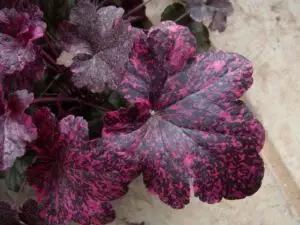
Heuchera ‘Midnight Rose’
Heuchera ‘Midnight Rose’ has been bred for its Jackson Pollock-inspired leaves.

Heuchera ‘Peach Flambé’
The cultivar Heuchera ‘Peach Flambé’ sounds and looks like a color of nail polish.
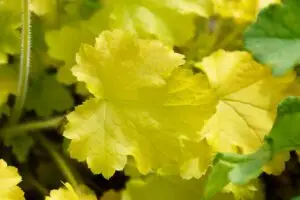
Heuchera ‘Electric Lime’
Heuchera ‘Electric Lime’ does indeed look like a margarita plugged in. Plant this cultivar alongside other green leaf colors to help all nearby plants look extra spectacular.
Make your own cultivar!
You don’t need a botany PHD or a lab coat to make your own cultivar. People have been doing it for centuries. (Read Missouri Prairie Foundation’s “Natives, Cultivars, and Nativars” for more background.)
You can make your own cultivar by cross-pollinating or paying attention to genetic variations. Find a tomato that’s extra sweet? Or a Black-eyed Susan that’s a little smaller than the others, and great to use in a border? Simply take a cutting or save its seed like generations before. Or be even more experimental; some plants can be cross-pollinated using a Q-tip! And just like that—you’ve made your own cultivar.
Don’t forget to give it a good name!
One last thing: most cultivars can only be propagated by a cutting—not seed
Because—as you now know!—most cultivars are made by human intervention (instead of natural plant reproduction), unless a cultivar is made by selection, it most likely will not be able to propagate consistently via seed. The genetic instructions for the cultivar exist within the plant, but not within its seeds.
For this reason, to propagate most non-selection cultivars, you will most likely need to take a cutting. This cutting will be a dupe of the original plant’s DNA.
A note for the lawyers: most corporate cultivars are copyright-protected
We hope you’re sitting down as you read this next paragraph.
Almost all of the cultivars sold in nurseries are under copyright from their parent growing company. This means it’s actually against the law to propagate them because it would be infringing on the company’s copyright! Plant companies spend enormous amounts of money using the techniques we described above to give us new plants with a wide range of colors, heights, blooms, and drought tolerance. Unfortunately, the law says that these cultivar plants are their intellectual property. It’s something to keep in mind as we consider planting cultivars.
To wrap things up, cultivars have been made for centuries by growers who pay attention to genetic variations in plants and curate what they see. The oldest method of creating cultivars is selection, which is now joined by newer methods like hybridization and tissue culture.
Cultivars offer different colors, heights, tastes, and weather resiliency. But no matter what they offer in variation, cultivars cannot contribute meaningfully to our ongoing natural ecological world. Plant true natives whenever you can.
Now that you know what a cultivar is, go explore 75+ native plants in our Native Plant Library! Or go straight to our Host Plants for Butterflies guide to find some favorites. Happy planting!
